At Seminis, the branch of Bayer that deals in seeds from the open field, they pay a lot of attention to cabbages during the open days. On the field in Enkhuizen, next to the production location of the breeding company, visitors of the open days were given a tour of the various plantings of cauliflower and broccoli. Lennert van Arenthals, Technical Account Manager Benelux for onions, carrots, cauliflower, and broccoli, precedes us.
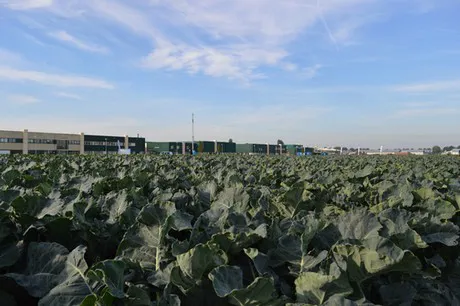 The demo field are right next to the production location of the breeding company
The demo field are right next to the production location of the breeding company
Seminis has several novelties in the broccoli segment this year, such as the stem-broccoli, also known by the brand name Bellaverde. Lennert focuses on the variety Sibsey. "For the stem-broccoli, the emphasis is, as the name suggests, on the stem. The stem of the Sibsey has a nice, soft texture, and has a sweet taste. It is still a small product and relatively expensive in the Netherlands. "Growing this type of broccoli takes a bit more work, making the product more expensive. The Netherlands therefore imports a lot of stem-broccoli from abroad."
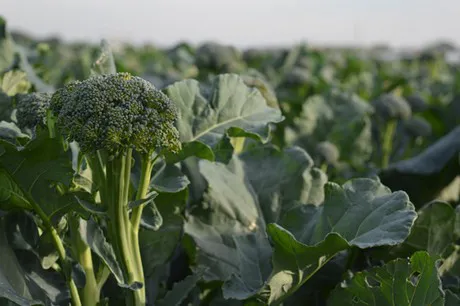
A new broccoli variety from the segment stem-broccoli (Bellaverde brand). "This variety has a cleaner, longer stem, with a soft texture and less leaf."
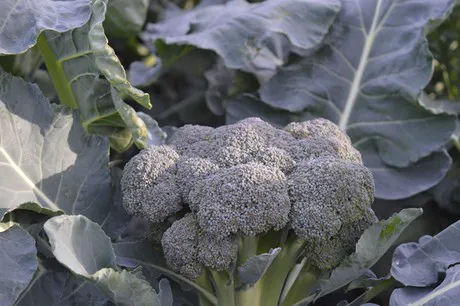 A screen of the second new Seminis broccoli variety, a variety of the Easy Floret concept.
A screen of the second new Seminis broccoli variety, a variety of the Easy Floret concept.
Seminis expects to introduce a second variety soon, which has a nice sweet stem. This variety falls under another new concept: the Easy Floret broccoli. "The idea behind these kind of varieties is that you can turn a broccoli into several florets with one cut. The consumer can use those florets in any way possible."
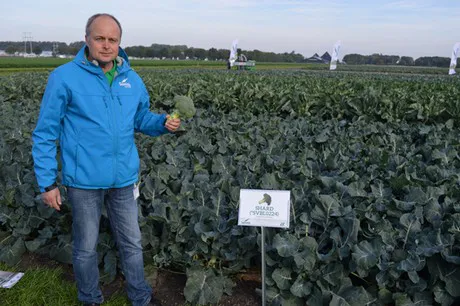 Lennert van Arenthals with the variety Shard (*SVBL0224, awaiting approval of the name), an autumnal brand.
Lennert van Arenthals with the variety Shard (*SVBL0224, awaiting approval of the name), an autumnal brand.
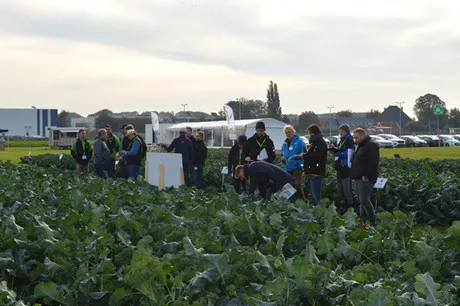 A lot of international interest in the Easy Floret concept.
A lot of international interest in the Easy Floret concept.
If you talk about broccoli, you cannot avoid Ironman at Seminis, the largest variety for the fresh market in the Benelux. Second place is held by Steel. A third new and upcoming broccoli variety besides the established names is Shard (*SVBL0224, awaiting approval of the name). "We will probably be going commercial with this brand next season. It is an autumnal variety, at the end of September / begin October, that easily gains weight."
 The variety Whitex with a natural inbred, remaining white property, also after harvest.
The variety Whitex with a natural inbred, remaining white property, also after harvest.
The white-remaining cauliflower is new in the cauliflower segment. "Covering of the cabbage with leaf is not necessary and that saves labor. The fact that it is a well-growing and stand-up crop, helps a lot. "The light resistance has been bred in. "Also after harvest the cauliflower remains white longer, with a good shelf life." The first variety in this segment to go commercial is Whitex. In 2019 this is going to happen according to Lennert.
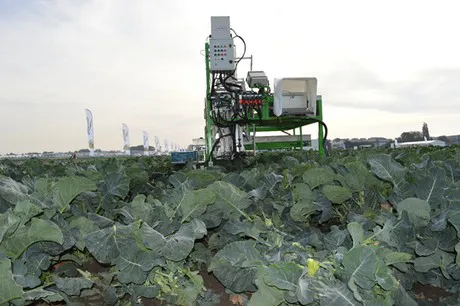
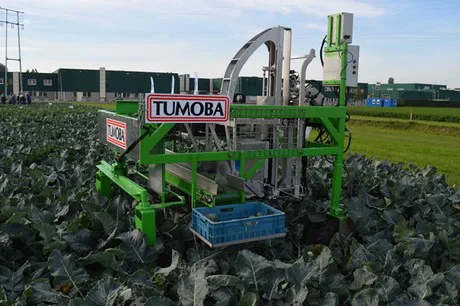 The third prototype harvest robot of producer Tumoba on display during the open days.
The third prototype harvest robot of producer Tumoba on display during the open days.
There is a robot in the broccoli field, a harvest robot. Tumoba, producer of this robot, showed the third prototype of this robot. The robot is equipped with screen recognition, to enable the robot to find the broccoli screens ready for harvest while driving, to cut them and to put them on a conveyor belt for transport to a collection container.
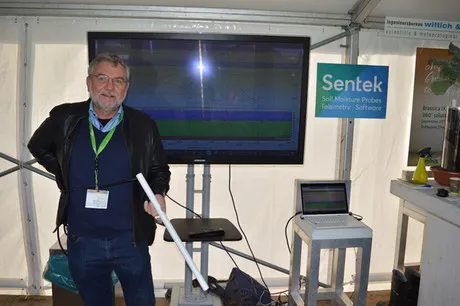 Peter Buss, Sentek, with a sensor for the analysis screen.
Peter Buss, Sentek, with a sensor for the analysis screen.
Besides the field, there is also high tech to be seen, while enjoying a cup of coffee. There is a Sentek screen, the company behind the moist sensors placed everywhere in the test field, which measures in steps of 10 cm, with which the speed a crop takes up water can be measures on various depths. Peter Buss, Sentek: "On the screen you see three zones (red, green, and blue) that match dryness, an ideal moist ratio in the soil, and a soil that is too wet. Once the line leaves the green zone, you know that the crop is in trouble. The data these sensors generate, can be received by a smartphone, which can put the data in the Sentek system for analysis. We are growing globally, also in the greenhouse horticulture."
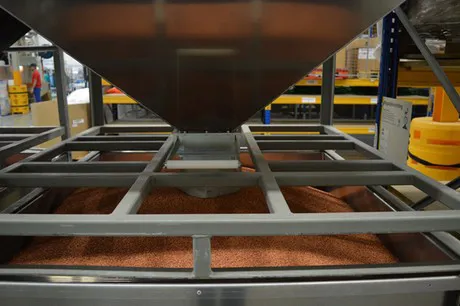 Lots of vegetable seed, spinach seed in this case.
Lots of vegetable seed, spinach seed in this case.
For those who were done with the vegetables on the fields, there was the possibility to get a tour of the vegetable seed company. Visitors got the chance to take a look at the process the seed undergoes before the grower can use it.
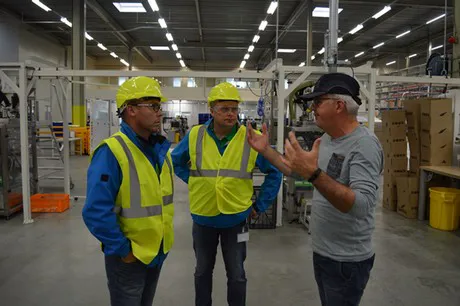 An employee gives explanations to some visitors
An employee gives explanations to some visitors
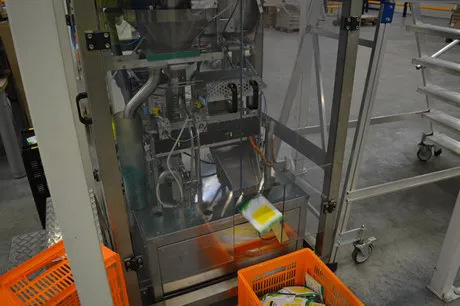 A packaging machine in action. The seeds are being counted accurately so the customer gets exactly the number of seeds he ordered.
A packaging machine in action. The seeds are being counted accurately so the customer gets exactly the number of seeds he ordered.
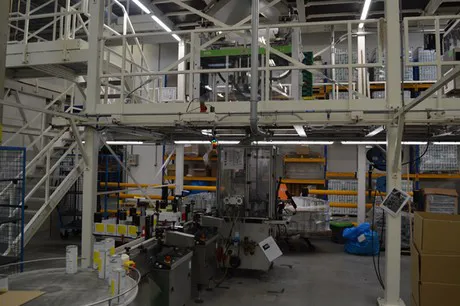 The larger packaging machines are equipped with multiple channel counting units, to count accurately the number of seeds required.
The larger packaging machines are equipped with multiple channel counting units, to count accurately the number of seeds required.
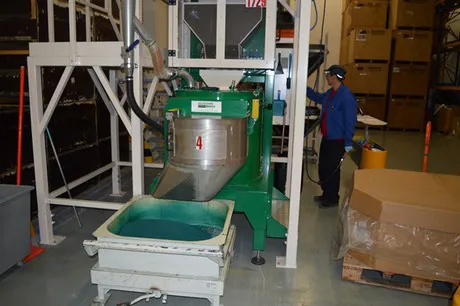 Film coating for cabbage seed. Because synthetic coating has been replaced by a natural product, made of potato flour, no residue of the coating is left. This is a sustainable solution in which the resource is a waste product from the potato-processing industry.
Film coating for cabbage seed. Because synthetic coating has been replaced by a natural product, made of potato flour, no residue of the coating is left. This is a sustainable solution in which the resource is a waste product from the potato-processing industry.
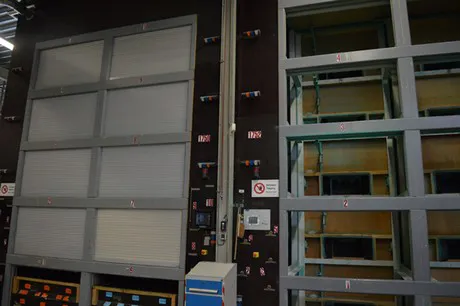 After treatment of seeds with surface coating the seeds have to be dried again.
After treatment of seeds with surface coating the seeds have to be dried again.
Want to visit the location Enkhuizen? Send an email to [email protected]
For more information:
Seminis
www.seminis.nl
Lennert van Arenthals
[email protected]
